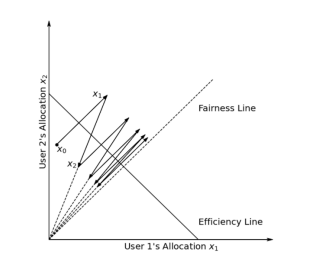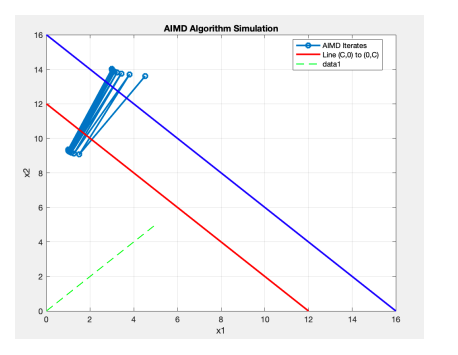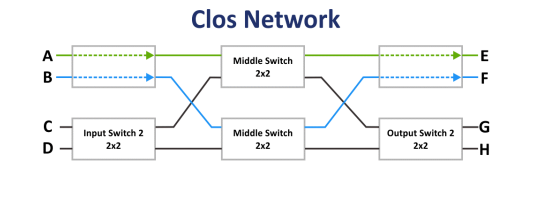Cloud Computing
Tutorial 1 Cloud Basics and Data Center Networking Reference
1) Describe and illustrate some examples of PaaS and SaaS. Explain in your own words the specific problem formulations addressed in the PaaS and SaaS examples.
Examples of Platform as a Service (PaaS) are Google App Engine, Github repository that provide software developers with the online resources for CI/CD software development. Online social network platforms like X (formerly Twitter) are considered PaaS and they enable efficient exchange and dissemination of real-time information between large groups of users. Dropbox can be considered as a PaaS for distributed storage of a variety of multimedia files. SaaS for email services like Google Gmail allow a large number of users to exchange information cheaply and conveniently. SaaS for document creation like Microsoft 365 Office Suites allow users to do word processing conveniently without worrying about version control and storage. SaaS like cloud-based language models, e.g., OpenAI ChatGPT allow cheap content creation and enhance productivity. SaaS like CVXGEN (https://cvxgen.com) allows code translation -from high-level domain-specific
language design to low-level real programming language like C that runs on
microprocessors. For example, CVXGEN was used to generate customized flight code, which enables very high-speed onboard convex optimization that solves
SpaceX!s self-landing rocket problem (https://www.naefrontiers.org/55374/Paper).
2) Say computer A sends data to computer B in a bursty manner using packet switching. On average, the sender A generates 100Kbps in 10% of the time, and idles for 90% of the time. Given a link with 1Mbps and that has no memory space, what is the maximum number of senders that can be supported in order to guarantee that a packet drop at the link occurs with at most a probability of 3×10-5?
First, use Binomial distribution to write down the probability of a packet drop (which is due to the presence of 11 senders, 12 senders, “, N senders) and let this expression be less or equal than 3×10-5. Then write a program to search for the largest N that satisfies this inequality. One efficient way is the bisection search on N (giving N=27).
See a fellow classmate, Darryl See Wei Shen’s program to calculate N:
https://pastebin.com/Bbykmehc
3) A popular TCP protocol is the TCP Reno, which uses the Additive-IncreaseMultiplicative-Decrease (AIMD) algorithm to control the amount of data sent. The AIMD algorithm controls the congestion window with two parameters. For source s, let the additive and the multiplicative parameters be set as, respectively,
.
Typically, these two additive and the multiplicative parameters are set as 1 and 0.5, and this leads to a trajectory as shown below for two senders over a common
switching link. Discuss how you might set the AIMD parameters in a data center environment with its integrated tiered architecture. Will fairness still be important in a data center?
Hire a Professional Essay & Assignment Writer for completing your Academic Assessments
Native Singapore Writers Team
- 100% Plagiarism-Free Essay
- Highest Satisfaction Rate
- Free Revision
- On-Time Delivery
Cloud Computing

In Tutorial, we demonstrate a Matlab code to study the AIMD dynamics. We used ChatGPT to perform code translation to generate the following code:
import numpy as np
ITERATESMAX = 100 # You can adjust this value as needed
C = 10 # Adjust C value as needed
alpha = 0.1 # Adjust alpha value as needed
exponent1 = 2 # Adjust exponent1 value as needed
exponent2 = 0.5 # Adjust exponent2 value as needed
x1 = 1
x2 = 1
alpha1 = 0
alpha2 = 0
x1_values = np.zeros(ITERATESMAX)
x2_values = np.zeros(ITERATESMAX)
for i in range(ITERATESMAX):
# if (x1 + x2 <= C + alpha1 + alpha2): # when alpha is large it pushes the const
boundary out
if (x1 + x2 <= C):
# Additive increase phase
print(‘Additive I’)
alpha1 = alpha * np.power(x1, exponent1)
alpha2 = alpha * np.log(x2 + 1)
x1 = x1 + alpha1
x2 = x2 + alpha2
else:
# Simulate network condition (for example, congestion)
print(‘Multiplicative D’)
beta1 = exponent1
beta2 = exponent2
Cloud Computing
x1 = x1 * beta1
x2 = x2 * beta2
# pause(1)
# Store values in arrays
x1_values[i] = x1
x2_values[i] = x2
# Display the final values
print(“Final x1:”, x1)
print(“Final x2:”, x2)
The following figure shows that the two flows converge to an equilibrium that favors User 2 with the following alpha update:
alpha1 = alpha * np.power(x1, exponent1)
alpha2 = alpha * np.log(x2 + 1)

In a Data Center, unlike the Internet, we can design new congestion control
algorithms, e.g., varying the AIMD parameters (alpha and beta) to achieve different networking performance. It is not surprising that AI and machine learning can be used to design creative network algorithms for large data centers # you can possibly use ChatGPT to design new AIMD algorithms.
See a fellow classmate, Darryl See Wei Shen’s program: https://pastebin.com/w7G1W3xA
Cloud Computing
4) Let!s learn a bit more about the Clos network topology in data centers (see next page for introduction). Draw a 3-stage Clos network for which N = 4, n = 2, k = 2, m = 2.

5) For further reading, see the paper on TCP Ex Machina: Computer-Generated
Congestion Control, ( https://web.mit.edu/remy/TCPexMachina.pdf) by researchers from MIT and Stanford. A presentation video is available at:
https://cs.stanford.edu/~keithw/.
AI data centers like Stargate leverage Clos network topology for scalable, low-latency communication and advanced congestion control to optimize data flow and minimize bottlenecks. This combination ensures efficient performance, enabling Stargate to meet the demands of modern AI workloads. Consider what might be the future of data centers and cloud computing that take into account modern AI workloads.
Buy Custom Answer of This Assessment & Raise Your Grades
The post Cloud Computing: Fundamentals, Networking, and Advanced Concepts appeared first on Singapore Assignment Help.

